Author: Sirius&Jungle; Source: GO2MARS's WEB3 Research
Mass Adoption" is a continuous narrative theme in the Web3 field. Its core goal is to migrate the huge user base accumulated by the Web2 platform to the Web3 ecosystem. Every project on the road to promoting the implementation of the mass adoption narrative will and should become the focus of the entire market.
For this reason, Mass Adoption will become one of the ultimate goals of many Web3 products, especially Web3 social products that pay special attention to user participation. So, when a project embarks on the road of Mass Adoption, what trends will emerge? What characteristics are worth learning and reference for other projects?
Take Notcoin as an example. Telegram, a world-class social product based on the ton ecosystem and 900 million average monthly active users, uses lightweight Tap-to-Earn for mining and viral spread, allowing many new users to enter Web3 through the Telegram portal. Since its launch on January 1, 2024, Notcoin has become one of the most popular and user-rich channels on Telegram. The community is extremely popular, with more than 30 million participants and more than 6 million Telegram groups, achieving great success.
On the road to implementing Mass Adoption, UXLINK, a social platform and infrastructure, uses Link-to-Earn, a social relationship among acquaintances, to establish a Web3 social network and organize users into acquaintance groups, serving users and developers at the same time. According to the UXLINK official website, UXLINK has more than 7 million registered users, covering 100,000 groups and reaching 8 million users. At present, the product still has great growth potential at the relevant data level.
In the following content, we will start from the core fundamental data and conduct an in-depth comparative analysis of NOTCOIN and UXLINK.
When comparing projects, we face the challenge of difficult to verify the source of off-chain data. Therefore, this analysis will focus on evaluating projects in two different fields from the perspective of on-chain data. NOTCOIN's on-chain data is mainly on the TON blockchain, while UXLINK's core data is concentrated in the Arbitrum/EVM ecosystem.
From the perspective of on-chain holders:
Based on the on-chain data of the TON blockchain, we observe that before the Token Generation Event (TGE), NOTCOIN had approximately 220,000 holders. Since its listing, the number of holders has steadily increased and currently exceeds 1 million. If the event analysis method is used for growth attribution, Notcoin's core growth momentum comes more from various incentives after listing.
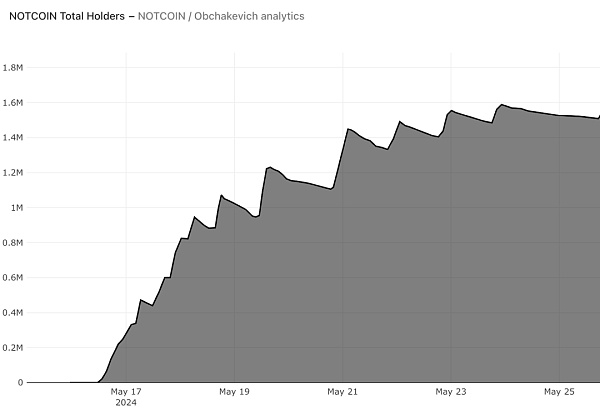
According to data provided by Dune Analytics, UXLINK currently has over 3 million on-chain point holders and about 1.4 million NFT holders. Public information shows that these NFT holders are high-value users with a large accumulation of on-chain points in the UXLINK community, and are the only credentials for obtaining airdrops. Therefore, we can reasonably infer that before UXLINK went public, the number of its token holders was about 1.4 million or more, exceeding the scale of NOTCOIN after its listing. The subsequent situation remains to be verified, but if UXLINK can continue to find relevant growth momentum and maintain the same growth rate, it is not difficult to imagine its huge development space.
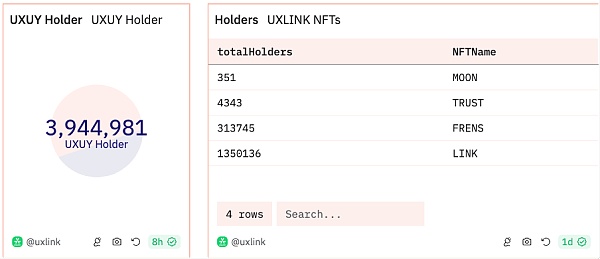
From the perspective of active users
When analyzing the active user data of NOTCOIN, we found that during the Token Generation Event (TGE) and the 5 days thereafter, the number of active users was mainly between 300,000 and 500,000, and showed a gradually declining trend.
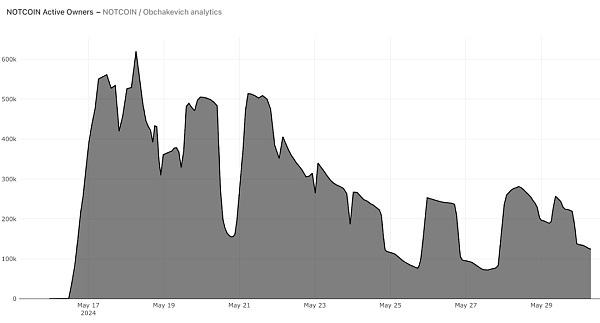
For UXLINK, on-chain data shows that its daily active users have exceeded 500,000. Specifically, within the time range of 24 hours, 7 days and 30 days, the number of active users was 574,000, 1 million and 3.8 million respectively. These data show that UXLINK's user engagement has remained at a high level at different time scales. It should be emphasized that the current data growth momentum is mostly derived from marketing and product attributes. If enabled by the TGE event, there may be some greater changes.
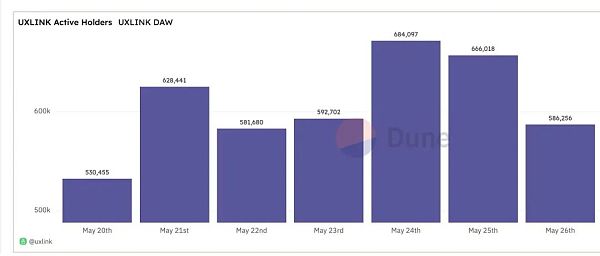
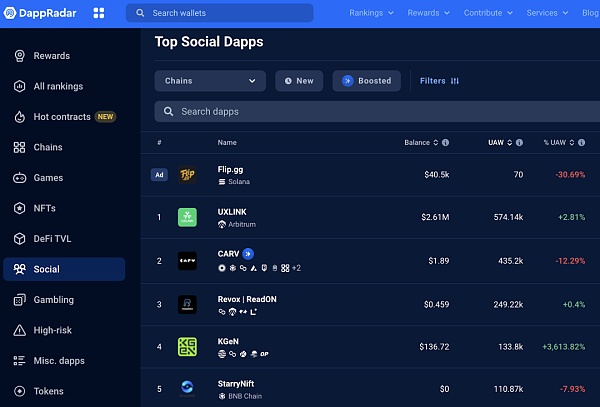
From the distribution of Tokens
The total supply of NOT tokens is 102,719,221,714. According to the distribution plan, 78% of the tokens will be distributed to miners participating in the Tap-to-Earn mining mechanism and Voucher holders. The remaining 22% will be reserved for future ecosystem funds and development funds to support the continued development of the project and the expansion of the ecosystem.
The total supply of UXLINK tokens is set at 1,000,000,000. Of this total, 65% of the tokens will be allocated to community contributors and developers through mechanisms such as POW (Proof of Work), Link-to-Earn, and Build-to-Earn. The remaining 35% will be allocated to investors, team members, and project development to ensure financial support for the project and incentives for the team.
In the Web3 ecosystem, there are only a handful of projects that can gather more than 5 million users. Although the two projects we discussed are in different business fields, which limits the possibility of our in-depth business analysis. However, by comparing their on-chain data, we can still reveal the common qualities of projects that have been successful in achieving madd adoption. These qualities are not only crucial for evaluating the current wealth effect of the project, but also have a far-reaching impact on predicting future trends in the entire market. Therefore, we should continue to respect and closely observe projects that are working to promote large-scale user adoption.
 JinseFinance
JinseFinance









